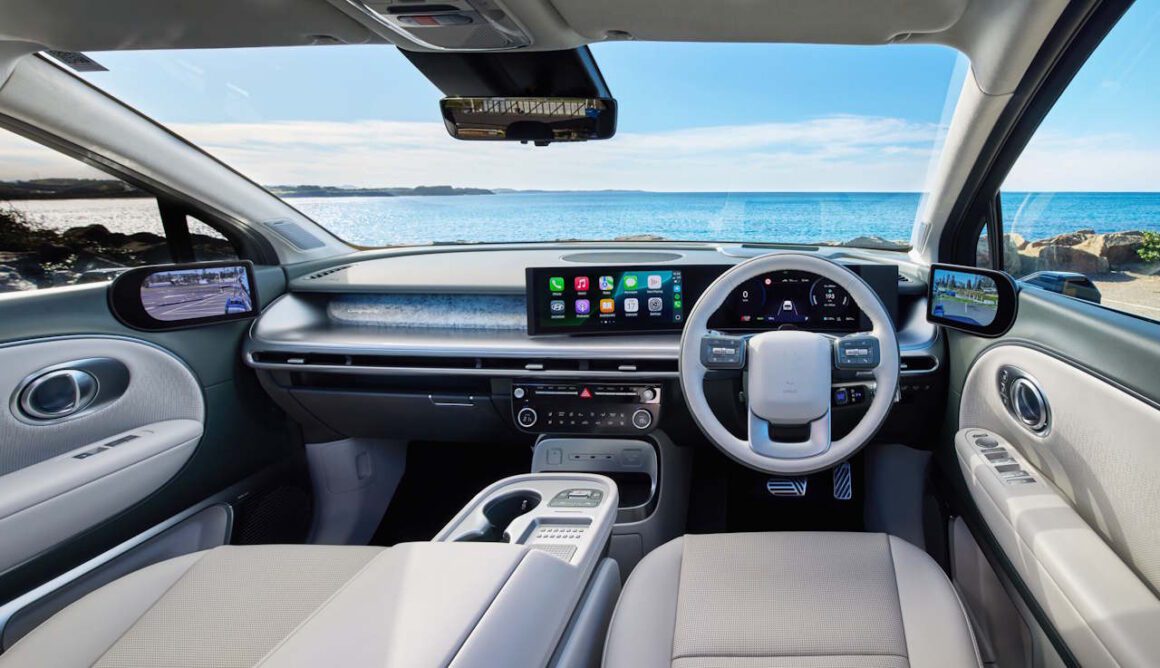South Korean automaker Hyundai has announced the Australian pricing for its flagship all electric SUV, the Ioniq 9, which will start from $119,750 before on road costs.
The three-row, 7-seater Ioniq 9 was first revealed late last year, and is based on the same Electric-Global Modular Platform (E-GMP) and includes many of the same features found in the popular and widely admired Ioniq 5 and Ioniq 6 EVs.
The Ioniq 9 is the most expensive car Hyundai has ever sold in Australia, with a starting manufacturer recommended list price (MLP) of $119,750 – though this increases to over $137,000 when adding on-road costs, luxury car tax and the luxury car tax.
The Ioniq 9 in Australia will feature a 314kW dual-motor (157kW + 157kW) all-wheel drive powered by a 110.3 kWh battery delivering an estimate WLTP range of 600 kilometres, fast-charging capability from 10 to 80 per cent in as little as 24 minutes, and maximum torque of 700Nm.
Two seating configurations are available, a standard 7-seat option and a 6-seat option for an additional $2,000.
While paying more to take away a seat might seem strange, Hyundai has introduced a sliding “Universal Island 2.0 Centre Console and a matching pair of Relaxation Seats for second-row passengers” in this six-seat variant. More information on seating configurations and features can be found below.
Optional digital side mirrors are available for a further $3,000, and metallic and pearl premium paint options for $750 extra, and three matte paint options for $1,000 each.
The launch of the Ioniq 9 also marks the Australian debut of Hyundai’s Digital Key 2 and Google Places Search. Digital Key 2 is a core feature as part of the innovative Bluelink Connected Car Services suite which enables a smartphone-based key that allows users to lock, unlock, and start the vehicle, and can be shared with up to 15 devices.
Over-the-air (OTA) updates will also keep the Ioniq 9 up to date, letting customers update critical system software for safety, braking, performance, and driver assist systems remotely – avoiding the need to visit a workshop simply by following on-screen prompts.
Inside, integrated curved 12.3-inch instrument cluster and infotainment displays are paired with a mixture of interior textures such as aluminium crash pad garnish, door panels finished in synthetic leather, and Nappa leather upholstered seats.

And thanks to the Ioniq 9’s long 3130mm wheelbase and flat floor, Hyundai claims the new SUV is the most spacious in its class.
The Ioniq 9’s exterior does look a little boxy and van-like from the sides and rear, but this would appear necessary so as to provide spacious room for seven and deliver the necessary aerodynamic performance.
Hyundai describes this design aesthetic as “Aerosthetic”, with a boat-tail rear design to maximise aerodynamic performance and space efficiency, complemented by wide shoulder lines.
A bevy of safety features are included along with 10 airbags including a driver’s knee airbag and a front centre side airbag.
More information, pricing, and a configuration tool can be found on the Hyundai website here.


Joshua S. Hill is a Melbourne-based journalist who has been writing about climate change, clean technology, and electric vehicles for over 15 years. He has been reporting on electric vehicles and clean technologies for Renew Economy and The Driven since 2012. His preferred mode of transport is his feet.








